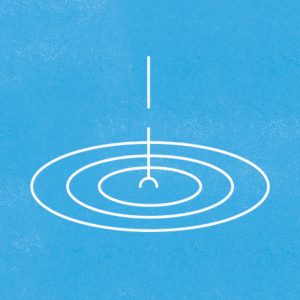Lessons in Emptiness
Consider a lake. What is it? What makes “it” a lake?
Rain falls in; water evaporates from it and seeps into the soil beneath; multiple streams flow in; a single stream flows out. The ever-changing flora and fauna of the lake—are they parts of the lake? If so, what about the waterfowl that come and go? Or does the lake consist only of the water that surrounds their bodies? If so, is that also true of the fish that take in water through their gills? The water flowing in and out of those gills?

A “lake” is a mentally conceived object. There’s no Real Lake that can be pinned down or gotten hold of.
A lake is a concept.
The same can be said of a cat, a cloud, a star, you, God . . . anything.
Yet we also cannot legitimately say there is no lake, or cat, or cloud, and so on.
Whatever we consider, it is neither Nothing nor Something.
From The Grand Delusion: What We Know But Don’t Believe, by Steve Hagen © July 2020. Reprinted with permission of Wisdom Publications. Steve Hagen is the founder and head teacher of Dharma Field Zen Center in Minneapolis, Minnesota.
Open Mind, Fair Mind

Meditation is a practice that helps us settle the mind, unwinding our tendency to create categories of right and wrong, for and against. Sitting quietly upright, things are simply as they are, here and now. The mind returns to its original state—open, empty, free of egoic compulsions and fixed identity. In time, this cultivation of open awareness contributes to more flexibility of the mind and a concurrent ability to include more perspectives. Our powers of observation become more acute, and we can actually see our prejudices arise, noticing how we cling to fixed views. Eventually it becomes easier to relinquish them and be open to new ways of seeing. If our minds weren’t fundamentally empty, we could never create a fairer society. But our naturally unbiased open mind is the source of true wisdom and compassion, and cultivating it puts us in touch with the innate value of all things.
From Compassionate Conversations: How to Speak and Listen from the Heart by Diane Musho Hamilton, Gabriel Menegale Wilson, Kimberly Myosai Loh © 2020 by Diane Musho Hamilton, Gabriel Menegale Wilson, Kimberly Myosai Loh. Reprinted in arrangement with Shambhala Publications. Diane Musho Hamilton is a Zen priest, meditation teacher, and author of several books. Gabriel Menegale Wilson is a leadership coach and an associate for Delta Developmental, a leadership and organizational development consultancy. Kimberly Loh is a leadership coach, consultant, and writer.
Nowhere to Go Except Here

We mustn’t think of the present as a split second, as if we’re looking at the second hand on our watch, because that’s just an abstract view. Watchmakers make those lines as small as visibly possible, and the second hand sweeps across them so quickly that you hardly have time to say “now,” and we’ve come to think of that slice of time as the present moment, but it’s not. Present time is more like an oval-shaped field of vision with a clear center and fuzzy edges. When you’re listening to music, you don’t hear it one note at a time—you hear it in phrases, you anticipate what’s coming, and you recall what has already been played. That’s the wide but fuzzy-edged view of what is called the present.
Excerpted from Just So: Money, Materialism, and the Ineffable, Intelligent Universe, by Alan Watts © 2020. Reprinted with permission of Sounds True. Alan Watts (1915–1973) was a philosopher, writer, speaker, and counterculture hero, best known as an interpreter of Asian philosophies for a Western audience. He wrote over 25 books and many articles applying the teachings of Eastern and Western religion and philosophy to everyday life.